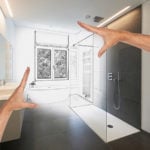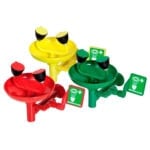Legionella
What are legionella?
Legionella are water-borne bacteria. Legionella bacteria are found in warm and stagnating Water, for example in hot water pipes, air conditioning systems, thermal baths, fountains, showers, spa areas or even toilet cisterns, provide ideal living conditions. Maximum reproduction takes place at 25°C - 30°C. In cold water (<20°C), legionella are able to survive but not reproduce. Above a temperature of 60°C, legionella die within a few minutes.
What is legionellosis?
Legionella bacteria are found everywhere in our drinking water. Yet their oral ingestion, for example when drinking, is completely harmless. Legionella potentially become a danger when they are inhaled. They then spread to the lungs and infect the white blood cells. The result is a severe lung infection, which is fatal in 15-20% of all cases.
Risk groups are adults of advanced age and people with respiratory diseases or immunodeficiency, but also smokers.
Measures in case of legionella infestation?
- Chemical disinfection: continuous chlorine addition (≥10 mg/l) for 8 hours. -
- Thermal disinfection: Exposure of each tapping point to at least 70°C for at least 3 minutes with the outlet open.
Only short-term effect
The pipelines become contaminated again after only 3 to 4 weeks. The insides of the pipes are covered with a biofilm: a slimy matrix in which bacteria settle, feed and multiply. This provides protection for them and increases their resistance to temperature fluctuations (thermal disinfection) and biocides (chemical disinfection). During these measures, the bacteria gradually get used to this treatment and thus build up their resistance. In addition, there is a risk that biofilm aggregates will detach, spread in the drinking water installation and approach the tapping points and thus the end user.
Disastrous effects on drinking water installations and sewage pipes
These are not necessarily suitable for temperatures above 60°C or large amounts of chlorine. These measures can destroy piping systems or cause them to age prematurely.
Increased risk for users
During the measures there is a high risk for the users: - 3rd degree burns in case of thermal disinfection. - Poisoning due to chlorine treatment.
Delicate and costly measures
The above measures must be carried out at all points of the drinking water installation in accordance with regulations (deposits, unused pipe sections, heat losses, etc.). For this purpose, the installation must be out of operation and the measures must be carried out by expert maintenance personnel.
To avoid these measures, it is necessary to take action at 4 levels:
- Avoid unused pipe sections and water stagnation.
- Regular maintenance to prevent corrosion and calcification.
- Increase the water temperature in the pipes to prevent bacteria formation.
- Maintaining the temperature in the installation by circulating pipes and mixing as close as possible to the tapping point.
In the long term, effective control can only be achieved through continuous preventive measures are possible.
- Reduction of the stagnant water volume (e.g. also in solenoid valves)
- Use of suitable fittings
- Measures to reduce biofilm
You are currently viewing a placeholder content from YouTube. To access the actual content, click the button below. Please note that doing so will share data with third-party providers.
Source: Delabie 2017






